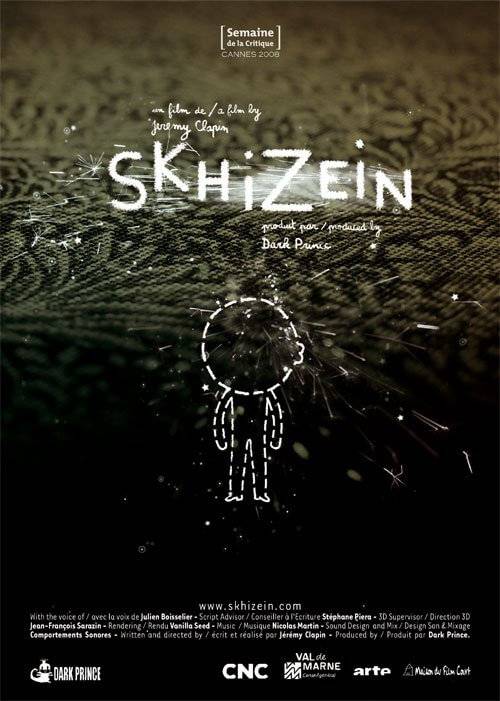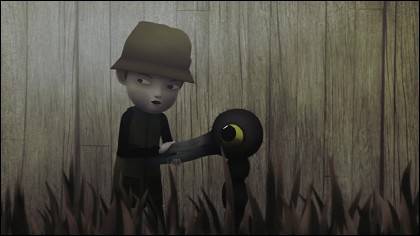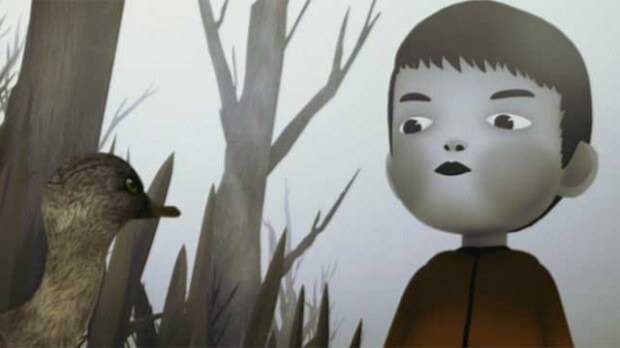Interview with ‘Palmipédarium’ director Jeremy Clapin
Jeremy Clapin is a unique animator from France who creates hauntingly surreal but engagingly human films using CG and digital techniques, giving animated life to stories you wouldn’t think you’d relate to.
His first film Skhizein is about a man who is hit by a meteorite and knocked off-kilter, having to live his life exactly 91cm away from himself. As his situation can’t be seen or understood by anyone, others think he must be mad, with only the audience able to view the man’s struggle against his affliction. An interesting look at the condition of the human mind, the film went on to win the Kodak Short Film Award at the Cannes Film Festival in 2008.
Five years on from the success of Skhizein, his new film Palmipédarium evokes the familiarity of growing up in the country; The misty mornings of rural life, the hunt, the smell of dew on fresh wild grass are all part and parcel of living off the land. The story follows a young boy who is being taken out to hunt, learn the way of his father and become a man. Later, whilst pondering life by a pond, he meets a strange, birdlike being in the woods who he, in empathy, seeks to help.
https://vimeo.com/42014540
The film has already been screened at Annecy, Stuttgart and Canes. The much anticipated film from the Paris-based filmmaker depicts an atmosphere of serenity with eerily surreal undertones wonderfully and has been scooping up accolades from festivals across the globe. Skwigly had the opportunity to discuss the working process with the filmmaker as well as his past and recent work in more detail.
Can you tell us a little about how you began working in animation?
First of all, working in animation was never a dream for me. My goal was just to avoid having a normal job. I never wanted to have one single job for life. I used to work in many disciplines – graphic design, illustration, even a tennis teacher – but animation offered me the freedom I needed. I mean, you can create something on your own and bring people into it without any product to sell or message to deliver. I never though I’d be paid for it. So I started to write my first film Backbone Tale and I was lucky to have some funding to do it. And now I fight and try to make my job as unprofessional as possible, just to keep this feeling of freedom.
I believe you studied at National School of Art Decoratif of Paris (ENSAD) – could you tell us about your experience there, and how it developed your work?
I joined ENSAD just because I’d succeeded at the exam. I tried printing, graphic design and typography but I found the animation option cool and started to be very interested in it. It was the only way to use and combine all the things I had learned.
Your film Skhizein is a film many people are familiar with, can you tell us what inspired the very clever and original narrative of a man that is hit by a meteorite and is knocked of kilter, 91cm to be exact?
It started with a drawing of a man sitting without a chair under his bottom (a reverse situation of the invisible man) the chair was drawn on the layer below. It was funny to see that the more I slide the two layers the more the character seems to be worried. The more the reality was sliding, the more the character was lost. So the psychological aspect of the film came second.
The film has a very clean and graphic look, was this due to the theme of the film or your own personal taste?
The concept is what drives me to decide what the look of the film will be. I always try to not push my personal taste onto the concept of the film…but of course I never succeed. For this film I needed detailed environments capable of being graphically interpreted. Compared to the background, all the characters look simple, very graphic, already disconnected from reality.
Your new film Palmipédarium has quite a different edge, look and mood to it, can you tell us about the change in atmosphere in this film?
I try to start from scratch in my works, too try and avoid systematic recipes. Contrary to Skhizein, Palmipédarium is an atmosphere film more than a conceptual film. I wanted the audience to experience a strange feeling of reminiscing about childhood. The film is quite open to interpretation.
What was the inspiration behind the nightmarish – yet somehow lovable – duck in this film?
In France there is an expression “lancer un pavé dans la marre”, which means you throw a stone in a lake to make the surface water ripple – in other words, you disturb a peaceful situation. One of the first confrontations between the boy and the monster is around that. Nobody knows what he is doing to the monster in the story, or to himself. He has to make a decision in himself.
Can you tell us about the relationship between the two characters and what they seek to find out from each other?
Their relationship changes, that was the only important thing. When you look at a child you never know how he will adjust his sensibilities in the new situation. The goal of the boy is to make this monster “acceptable”. The monster is constantly looking for its own place in the story.
You have a very individual take on the world, which is represented in your films. What do you think about when you begin a project, where do you draw your inspiration from?
I love when funny things are not so funny, when sad things are not so sad. When there is some echo to your personal experience.
Can you tell us a little about the techniques you use in making your films?
I use very simple CG. I don’t want to consider high level texture or how things like teeth look during a close up shot. I want a simple design in a credible world. I don’t need more to tell the story in the way I choose.
What are you working on next?
I’m working on the development of an animated feature film with Marc du Pontacive (producer of Gainsbourg vie Heroique). It’s exciting. But I am also raising my children while hopefully continuing to win enough money in festivals in order to keep my freedom.
Palmipédarium was recently screened at this year’s Bradford Animation Festival, with other official selections including Annecy, Stuttgart and KLIK!. Upcoming screenings include Belfast Cinemagic, Montreal Sommets du Cinéma d’Animation and Budapest Anilogue Festival. The film was recently shortlisted by the French Académie des Arts et Techniques du Cinéma for Best Animated Film at the 2014 César Awards. To find out more about Palmipédarium you can visit the Papy3D Productions website.





